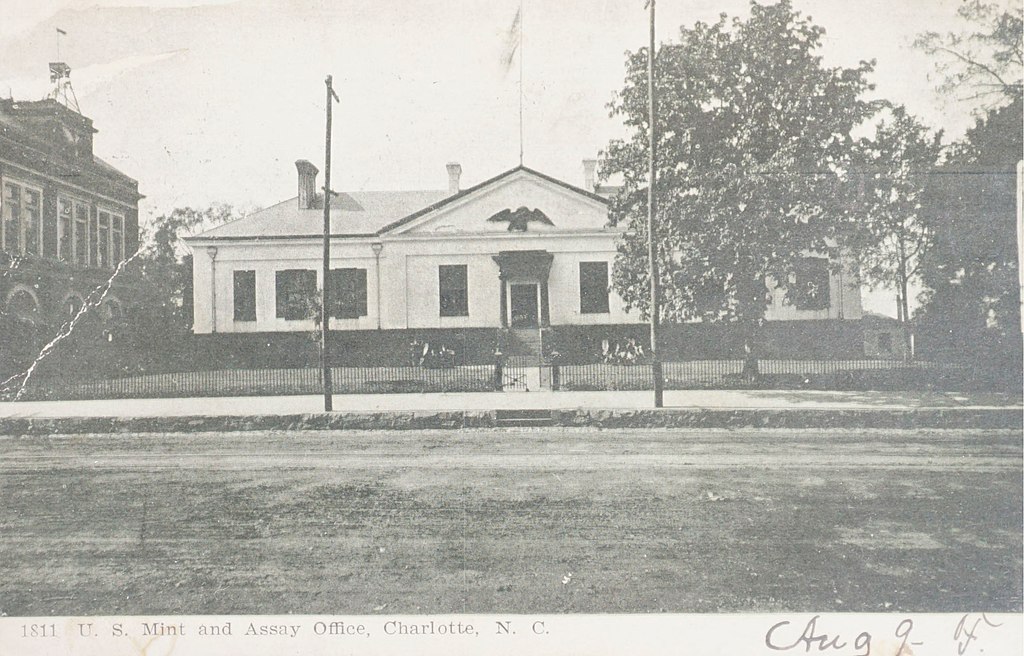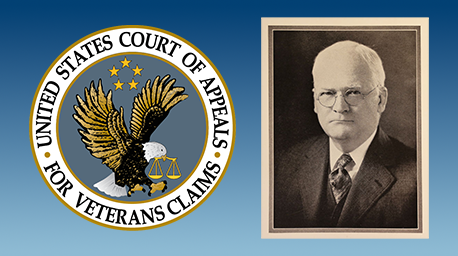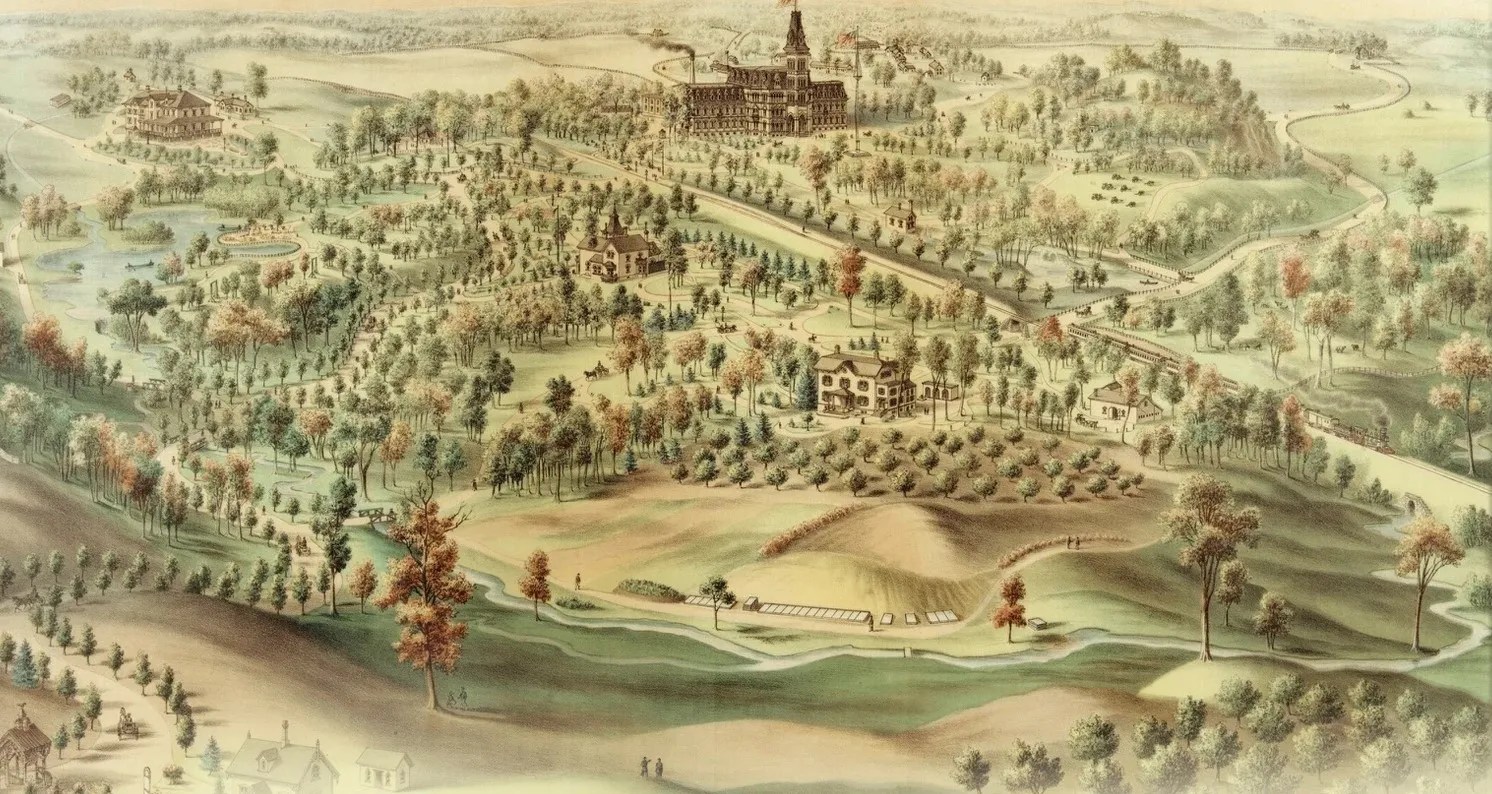The same law that established the Veterans Bureau in 1921 authorized the new agency to open up to 140 offices at the sub-district level. The purpose of these field offices was, in the words of the bureau’s founding director Charles R. Forbes, to “bring all of the activities of the Veterans’ Bureau closer to the men they serve.”1
To meet the needs of the estimated 100,000 Veterans of the recently concluded World War who resided in North Carolina, the bureau decided to establish two sub-district offices in the state. These offices reported to the district office in Atlanta, which also managed field offices in South Carolina, Georgia, Florida, and Tennessee.

The Veterans Bureau installed one office in the Charlotte Mint and Assay Building, which had been built in 1837 to process gold and mint coins from the North Carolina gold rush of the 1830s.2 Since the government already owned the 5,700 square-foot structure, the agency could use it free of charge. The second office was located in a commercial bank office in downtown Raleigh, which the bureau leased at a cost of $1,740 a year. Elsewhere in the state, the Veterans Bureau operated a hospital that had formerly belonged to the U.S. Army outside of Asheville. The 1,100-bed facility was among the largest in the bureau’s inventory and the only hospital in the southeastern part of the country equipped to treat tuberculosis patients.3
The Charlotte office employed 92 people while only 31 worked in the smaller Raleigh office. Employees at the time earned an annual salary of $1,525. Initially, the responsibilities of the sub-district offices were limited. The duties of the staffs in the two North Carolina offices included advising Veterans about the bureau’s benefits programs, assisting them with the application process, arranging physicals, and supervising their vocational training. The administrative reforms implemented by the bureau’s second director, Frank T. Hines, in the mid-1920s resulted in the closing of the Raleigh office and many of the other sub-district offices around the country. In addition, the district offices were phased out and their functions delegated to the field offices, which now were designated regional offices.

In 1927, a Veterans Bureau study found that combining Veterans hospitals with the Regional Offices would save 10% on operating costs. More than 10 years would pass before the agency, now called the Veterans Administration, decided to act on this finding in North Carolina. On October 17, 1940, the Charlotte Regional Office relocated approximately 130 miles eastward to Fayetteville, where it took up residence in the new Fayetteville VA Medical Center.
In October 1945, Fayetteville Regional Office leaders received permission to find a larger space for its workforce. The Veterans Administration approved a move back to Charlotte. The Veterans Administration wanted to find a single, 50,000-square-foot facility to house 400 employees, but a building that met those specifications could not be found in Charlotte. However, the Regional Office did identify a suitable location in the north-central part of the state, in the city of Winston-Salem.
The move happened quickly. By March 1946, the Regional Office employees were working in an unairconditioned tobacco warehouse in Winston-Salem, while lease negotiations with a more suitable location played out. Two months later, negotiations reached a point where a move back to Charlotte seemed possible. But in June 1946, the Veterans Administration signed a five-year lease with the Nissen Building in Winston-Salem.
The Regional Office moved two more times after 1946, on both occasions to new buildings in downtown Winston-Salem. Since 1974, the Regional Office has called the Hiram H. Ward Federal Building its headquarters. The office also operates off-site locations at Fort Bragg and Camp Lejeune.
The year 2021 celebrates the 100th year of the North Carolina Regional Office’s service to Veterans and the 75th anniversary of its move to Winston-Salem.

Footnotes
- Quoted in Annual Report of the Director, United States Veterans’ Bureau for the Fiscal Year Ended June 30, 1922 (Washington, DC: Government Printing Office, 1922), p. 7. ↩︎
- The building was subsequently dismantled in 1933, moved to a new location, and reconstructed in 1936 to house an art museum that is still open today. ↩︎
- The hospital’s original wooden buildings were replaced later in the 1920s and early 1930s by new construction. It remains part of the VA medical system under the name Charles George Department of Veterans Affairs Medical Center. ↩︎
By James Reed and the Winston-Salem Regional Office
Share this story
Related Stories

Featured Stories
A Brief History of the Board of Veterans’ Appeals
On July 28, 1933, President Franklin Delano Roosevelt signed Executive Order 6230 creating the Board of Veterans’ Appeals (BVA). The BVA was created as part of the Veterans Administration (VA), which had been established only three years earlier.

Featured Stories
The Fall of Saigon 1975: A South Vietnamese Military Physician Remembers
"There was chaos in the streets when I made my way to the hospital on the morning of April 30, 1975. In a place of order, there was now great confusion. The director and vice director of the hospital were gone, making me, the chief of medicine, the highest-ranking medical officer."



